Thalassoma pavo
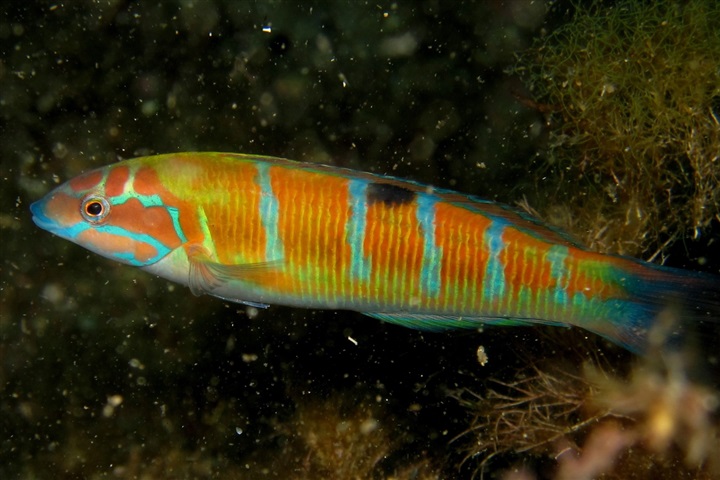
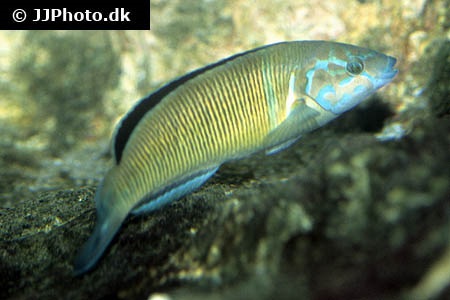
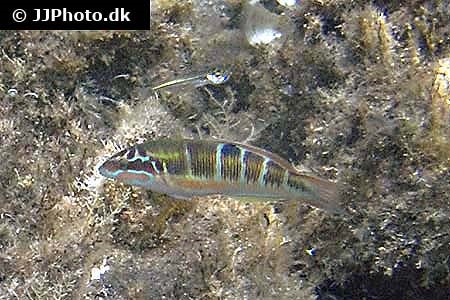
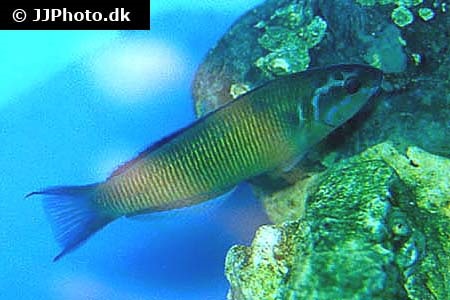
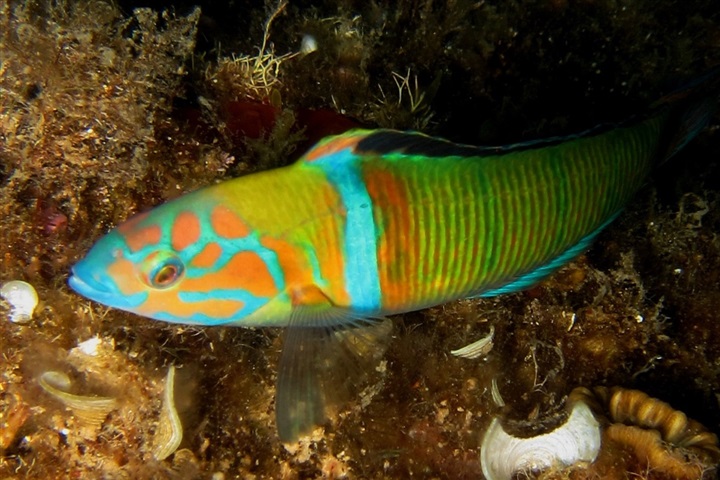
| Latin name | Thalassoma pavo |
|---|---|
| Local name | Ornate wrasse |
| Family | Labridae - Thalassoma |
| Origin | West Indian Ocean, Mediterranean Sea |
| Max length | 25 cm (9.8") |
| Minimum volume |
800 l (211 gal) |
|---|---|
| Hardiness |
Hardy |
| Suitable for aquarium |
Suitable with care |
| Reef safe |
Reef safe with caution |
| Aggressiveness | Aggressive |
| Recommended |
Larger crustaceans (Shrimp, crabs...) Other invertebrates Small crustaceans (Krill, mysis, artemia...) Zooplankton (Cyclops, pods...) |
|---|---|
| Maybee |
Fish |
This species is known to jump out of open aquaria.
This spicies might be a threat to smaller fishes.
This species will eat small crustaceans, snails, sea urchins, bristleworm etc.
This species lives in cooler water than is the norm for a saltwater aquarium.
The temperature should be kept between 16 and 22 °C (60 and 70 °F).
This species needs a very large aquarium when fully grown.
Exactly how big the aquarium should be is hard to say, but the size of this species is such, that it cannot normally be kept in a home aquarium.
This species can be extremely aggressive towards other fish.
Be careful when keeping these fish together with peaceful or docile species. Regular feeding, plenty of hiding places and a lot of space can alleviate aggressive behavior to some degree.
This species must be fed with an appropriately varied diet.
This fish requires feeding several times a day, especially when newly added.
When the fish can find its natural food in the aquarium it requires less frequent feeding.
This species needs good hiding places, for example, between live rocks.
This species revels in swimming and requires an aquarium with ample space.
This species can change gender from female to male.
When a male is needed, a female changes sex and takes on the role.
Thalassoma species are beautiful both as juveniles and as adult fish, even though there is quite a difference in appearance. On the whole, they quickly grow too large for most aquaria and are therefore often offered for sale.
Depending on size they live on everything from Artemia to larger invertebrates like snails, crustaceans and sea urchins. They are well able to smash larger crustaceans on rocks to get pieces small enough to swallow.
Large individuals can be extremely aggressive towards other fish and will happily eat the smaller ones.
They should really be fed three times daily, as they are very active, which incidentally, means they require a lot of swimming space.
Although these Wrasses often dig themselves into the sand, a sandy substrate is not absolutely necessary for them to thrive.
Wrasses are nearly always seen in reef aquaria, since many of the species are both attractive and useful in battling a range of unwanted invertebrates like i.e. flatworms, pyramide snails.
These fish live of everything from zooplankton to large crustaceans, sea urchins and the like.
The needs and behaviour of Wrasses vary greatly, so it is vital to familiarize oneself with the specific species before buying one.
Bob Fenner. Wrasses of the Genus Thalassoma - Wet Web Media - (English)
Scott W. Michael. 2009. Wrasses and Parrotfishes (Reef Fishes Series Book 5) - TFH Publications / Microcosm Ltd. - (English)

